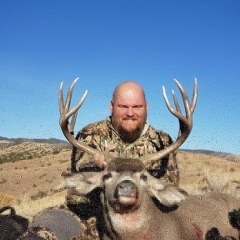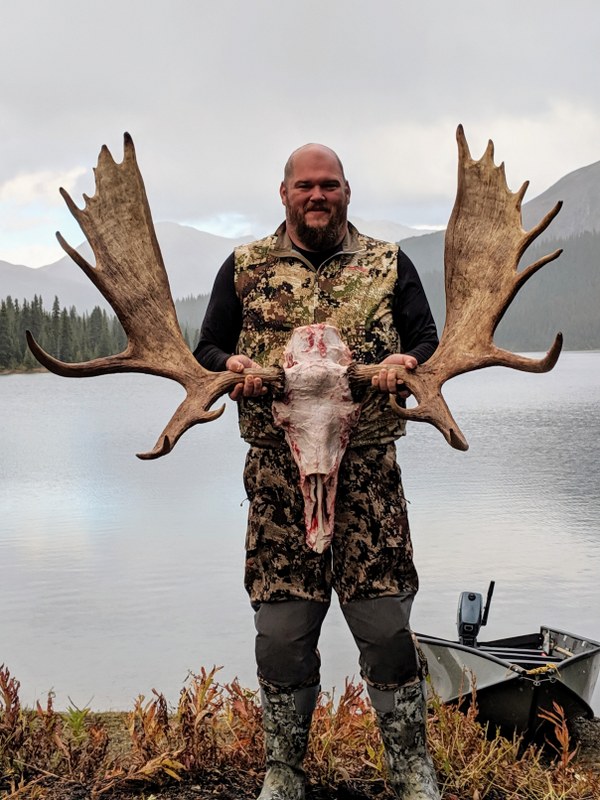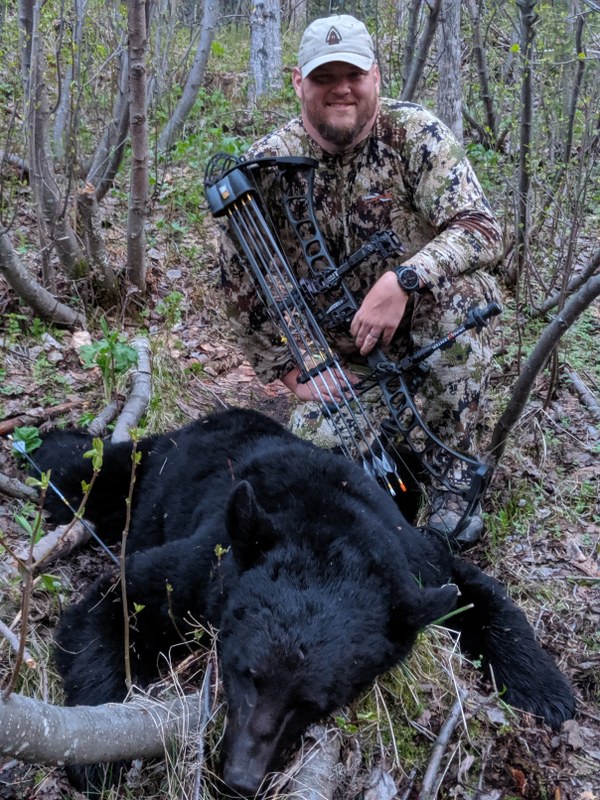
When you grow up hunting the hardwood ridges of Pennsylvania the thought of heading west in search of hunting adventure can be extremely exciting. The animals are bigger. The landscape is more alluring. And the legend is more, well, legendary. I don’t know of too many PA hunters who haven’t dreamt of calling in a bugling bull or leading a train of pack horses into the wilderness. The image of a canvas wall tent and small cook fire set against the backdrop of the Rocky Mountains in all their red and gold autumn glory is iconic. Who wouldn’t want to spend a week or two or ten in such a majestic setting? Yes, a western adventure hunt is exciting to think about, but it can easily become overwhelming once you start planning your trip. To help you out here is a rundown of our nine basic steps for a western adventure. I’ve broken it down into two categories: planning and training.



Planning
Step 1: What do you want to hunt and where?
This is the first question you need to ask yourself when you start the planning process. There are a lot of possible answers but only you can decide which is the right one. You could spend a week or two in late September chasing rutting elk up and down the mountains of Colorado, Utah, or Idaho. Perhaps you want to stalk a big muley through the coulees, canyons or grassy plains of New Mexico. Or maybe you’re looking for something even more elusive like a mountain goat hunt in northwestern British Columbia. All the possible choices will provide the experience of a lifetime, you just need to decide what experience you’re looking for.
Step 2: Outfitter or DIY?
This is another step in the process that requires you to make some big decisions. It’s also a topic that has been the subject of much debate lately. Again, there no right or wrong answer, it’s simply a matter of finding the correct fit for you.
Hunting with an outfitter gets you instant access to knowledgeable guides, eliminating the need for a lot of scouting. It also ensures you have a place to hunt that holds the animals you are pursuing. Food, lodging, and transportation in and around your hunting area is usually provided when on a guided hunt which again means less work and worry on your part.
DIY hunts on the other hand are almost always easier on your wallet allowing you to do them more often. There’s also the feeling of accomplishment that comes from knowing you did it all on your own. And with millions of acres of public lands in this country, the opportunity to get out there and create your own adventures is almost limitless.
Step3: Applying for tags
This is often the most confusing and frustrating part of the entire process. Almost every state requires non-residents to enter a lottery or draw system to acquire a tag. It’s confusing because each state’s application process is different and trying to figure out these processes can feel a little like reading an advanced calculus textbook written in Latin. And it’s frustrating because in addition to the hoops you must jump through the number of applications always exceeds the number of tags. The result is it may take multiple years of applying before successfully drawing a tag. Like I said, frustrating.
Don’t get discouraged however, there are ways to navigate through the quagmire. While most states are a draw, some, like Idaho, still offer over the counter (OTC) licenses. And there are even more states that while the better hunt units are draw only others are OTC or almost a guaranteed draw. The downside to these units is they receive a ton of hunting pressure and the trophy quality is often on the lower end. But if your priority is getting out west as often as possible this can be a viable means of achieving that goal.
Some other great resources to consider at this point in the process are online tools such as onX and goHunt, or a consulting service like Tipsy Moose Adventures. They can answer a lot of questions and help guide you through this process.
Step 4: Logistics
This is the part where opting for a DIY hunt over an outfitter is going to require more work on your part. You’re going to need to decide if this trip is a solo mission or a group effort. Are you driving or flying? Will you be staying at a motel/lodge or camping? If you’re camping, what type of camping equipment do you need? Are there any permits required to set up a campsite? What about food and water? I know this seems like a lot but that’s why planning months or even years in advance is a good idea.
Step 5: Getting time off from work
In an ideal world this step wouldn’t even be a consideration. However, reality isn’t so kind, and most people only have a limited number of vacation days. If you’re young and single and you want to use all your time to hunt pronghorn in Wyoming, no big deal. But once you get into a relationship or start a family, your significant other is probably going to want a say in it. This means you need to be smart when managing your time. Don’t waste a day off because it’s nice out and you don’t want to be at work. Maybe you decide to fly because it’s only two days of travel instead of driving for four or six. The key is to set priorities then stick to them.
Step 6: Budgeting
This is by far the most difficult part of planning a western adventure. Not only do you have the cost of the hunt itself, but there are also a lot of incidental costs that come along with it. You will incur travel costs whether you drive or fly. Food costs never go away even if it’s only while traveling. You are almost certainly going to buy some new equipment. A new sleeping bag, extra arrows, a better apparel system, all these items can make or break a hunt. And if you harvest an animal how are you getting the meat home? What about a taxidermy bill?
When you start to consider all of this you realize how important it is to have a budget in place. It can sound daunting but breaking it down into small manageable steps makes it much easier. Eating two more meals a week at home, one less trip to the movies a month, even changing what stores you shop at can give a big boost to your bank account. Once again it comes down to priorities.
Training
Now that I’ve covered the basics for planning a western hunt it’s time to turn the attention to the physical preparation that goes into such an endeavor.
Step 7: Cardio
From a physical standpoint this is the most important part of getting ready for an adventure hunt. The ability to walk for miles through all types of terrain is an absolute necessity. You may start your day climbing a thousand vertical feet to the top of a ridge but by midday you could find yourself trudging through a swamp or side hilling a rock covered mountainside. And most of the time you’re doing this with thirty to fifty pounds of gear on your back. That’s why my personal choice for cardio prep is heavy pack training.
Heavy pack training is exactly what it sounds like; you use a weighted pack during your cardio sessions to over prepare for real-life hunting situations. The key is to find a good pack that allows you to carry the weight comfortably. I recommend using a quality pack with an internal or external frame from companies such as Badlands, Sitka, or Stone Glacier. These packs allow you to shift and distribute your load weight between your shoulders and hips, increasing carrying capacity and lessening fatigue. As to how much weight you should train with, that’s your call. I carry anywhere from 50 to 130 pounds. If I really want to push myself, I’ll also carry a forty-five-pound barbell plate in each hand as if I were doing a farmer’s carry. Do this a few times a week for five or six months and you won’t have any trouble reaching that mountain top.
As much as I like heavy pack workouts, I don’t limit myself to just those. I also mix in some traditional cardio as well. When I really want to get my heart rate up, I jump on the exercise bike or elliptical machine. Both allow me to get a fast-paced cardio workout without putting too much stress on my joints.
.jpg)
.jpg)
Step 8: Strength Training
When the subject of lifting weights comes up most guys immediately think of throwing around the heaviest weight they can in an effort to get swole and impress the ladies. There’s nothing wrong with that, we’ve all done it. But that’s not the type of strength training that’s going to prepare you for a hunt. When your goal is to be able to go deeper into the backcountry or haul out your game or draw your bow effortlessly you need endurance and functional strength.
I’m not going to get into too much detail explaining functional strength except to say that it involves a lot of resistance exercises and body movements to help you become stronger, more flexible, agiler, and less injury prone. If you have more in-depth questions or want info on specific workouts to increase functional strength, I suggest contacting Archery Strong or Mtn Tough Fitness and have them design a plan for you.
When working to build muscle endurance I focus on low weight/high rep lifting for five to six sets per exercise. While it’s impressive to be able to bench press a small Buick, in the hunting world it’s more likely that you’ll need to draw your bow a bunch of times or step over several downed trees.
Step 9: Shooting, shooting, shooting
Absolutely nothing will prepare you more for taking that shot at the moment of truth than having complete faith in your equipment and shooting ability. And the best way to cultivate that faith is putting in hours and hours and hours at the range perfecting your technique and refining your equipment set up. I recently made a ninety-five-yard bow kill on a mule deer in New Mexico. I was able to do so because I spent countless amounts of time working on my form, testing different broadhead/arrow combinations, practicing my shooting at distances out to 130 yards, and so on. I don’t say this to brag, I say it to illustrate a point. I don’t possess any special skills or talent, I just put in the work. Anyone can do that.
Another important thing to remember when practicing for a western hunt is that you will almost never get a “normal” shot. You will be shooting uphill or down, from your knees, and I guarantee you will never be shooting from level ground. So, make it a point to practice this way. Hit up local 3D tournaments, good sportsmen’s clubs will set their courses in very realistic scenarios. Try doing some exercises then immediately pick up your bow and take a shot to mimic shooting under stress. I assure you your heart will be thumping when a bear or moose walks into bow range. Be creative with your practice sessions. The more you push yourself now the less likely you’ll find yourself out of your comfort zone when it counts.
Conclusion
As I said, getting ready for a western hunt can be both an exciting and daunting task. The key is to remember that for every moment of apprehension there is the promise of adventure. Every time you feel overwhelmed there’s a place to turn for guidance. And if you follow the steps and break it down it’s pretty easy to manage. Good luck and happy hunting.
